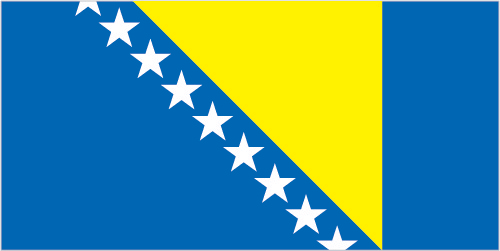
Bosnia has a transitional economy with limited market reforms. The economy relies heavily on the export of metals, energy, textiles and furniture as well as on remittances and foreign aid. A highly decentralized government hampers economic policy coordination and reform, while excessive bureaucracy and a segmented market discourage foreign investment. The interethnic warfare in Bosnia and Herzegovina caused production to plummet by 80% from 1992 to 1995 and unemployment to soar. With an uneasy peace in place, output recovered in 1996-99 but slowed in 2000-02 and picked up again during 2003-08, when GDP growth exceeded 5% per year. However, the country declined in 2009 reflecting local effects of the global economic crisis. GDP growth contracted again in 2012, but posted a small gain in 2013. Foreign banks, primarily from Austria and Italy, now control most of the banking sector. The konvertibilna marka (convertible mark or BAM) - the national currency introduced in 1998 - is pegged to the euro, and confidence in the currency and the banking sector has remained stable. Bosnia's private sector is growing slowly, but foreign investment has dropped sharply since 2007. Government spending - including transfer payments - remains high, at roughly 40% of GDP, because of redundant government offices at the state, entity and municipal level. Privatization of state enterprises has been slow, particularly in the Federation, where political division between ethnically-based political parties makes agreement on economic policy more difficult. High unemployment remains the most serious macroeconomic problem. Successful implementation of a value-added tax in 2006 provided a steady source of revenue for the government and helped rein in gray-market activity. National-level statistics have also improved over time but a large share of economic activity remains unofficial and unrecorded. Bosnia and Herzegovina became a full member of the Central European Free Trade Agreement in September 2007. Bosnia and Herzegovina's top economic priorities are: acceleration of integration into the EU; strengthening the fiscal system; public administration reform; World Trade Organization (WTO) membership; and securing economic growth by fostering a dynamic, competitive private sector. In 2009, Bosnia and Herzegovina was granted an International Monetary Fund (IMF) stand-by arrangement, necessitated by sharply increased social spending and a fiscal crisis exacerbated by the global economic downturn. Disbursement of IMF aid was suspended in 2011 after a parliamentary deadlock left Bosnia without a state-level government for over a year. The IMF concluded a new stand-by arrangement with Bosnia in October 2012 which aims to improve national policy coordination, continue fiscal contraction, improve crisis preparedness, and create an environment conducive to private sector development.
$32.16 billion (2013 est.)
country comparison to the world: 112
$31.9 billion (2012 est.)
$32.26 billion (2011 est.)
0.8% (2013 est.)
country comparison to the world: 178
-1.1% (2012 est.)
1% (2011 est.)
$8,300 (2013 est.)
country comparison to the world: 131
$8,200 (2012 est.)
$8,300 (2011 est.)
agriculture: 8.1%
industry: 26.4%
services: 65.5% (2013 est.)
18.6% (2007 est.)
0.2% (2013 est.)
country comparison to the world: 10
1.8% (2012 est.)
1.49 million (2012 est.)
country comparison to the world: 129
agriculture: 18.9%
industry: 29.8%
services: 51.3% (2013)
44.3% (2013 est.)
country comparison to the world: 193 44.1% (2012 est.)
note: official rate; actual rate is lower as many technically unemployed persons work in the gray economy
steel, coal, iron ore, lead, zinc, manganese, bauxite, aluminum, motor vehicle assembly, textiles, tobacco products, wooden furniture, ammunition, domestic appliances, oil refining
11.7% (2013 est.)
country comparison to the world: 8